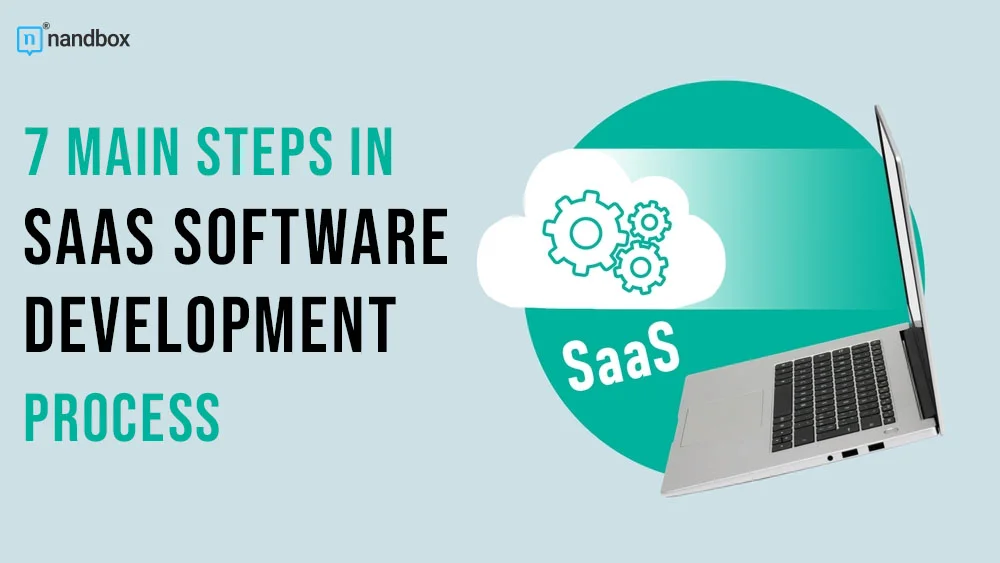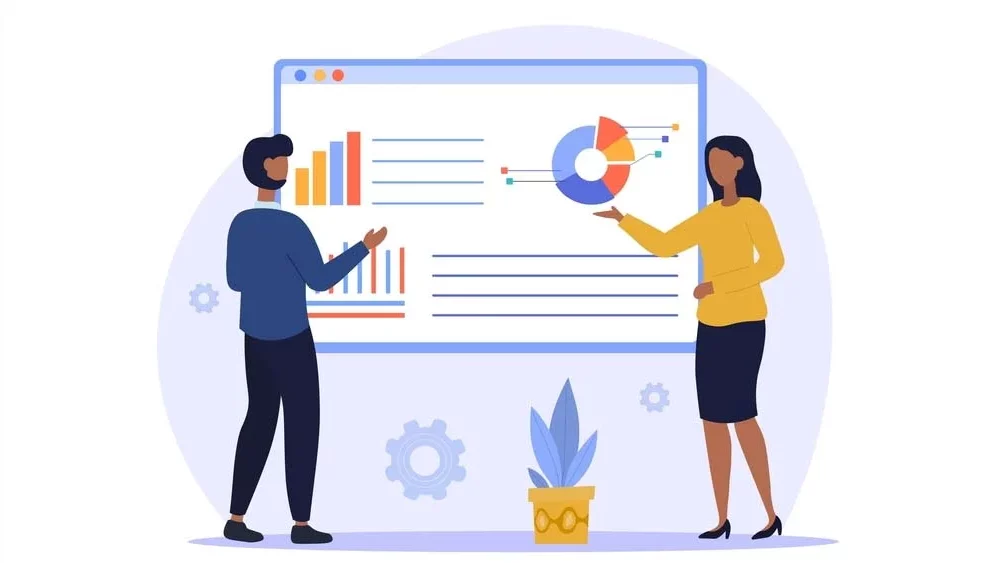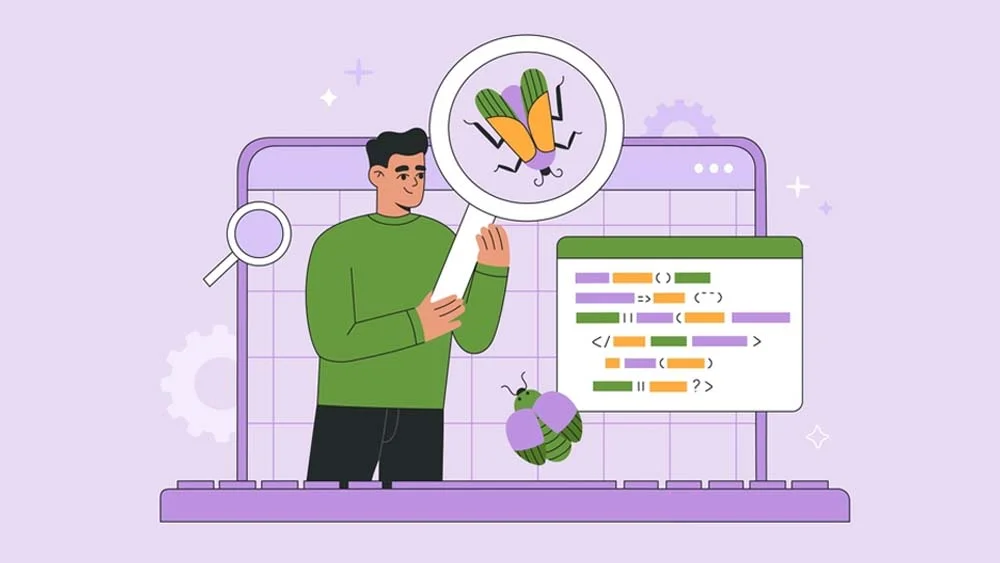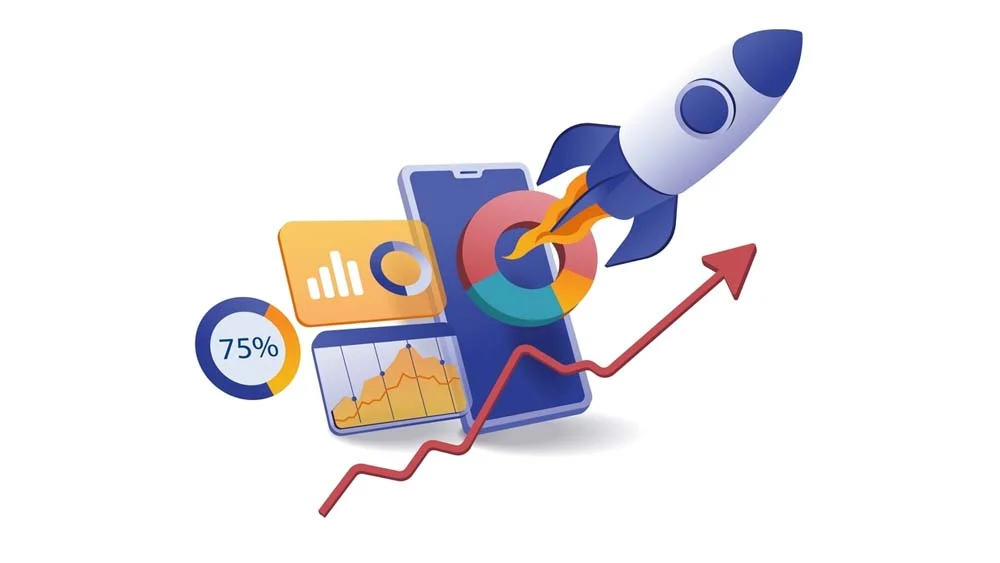SaaS software development interests more entrepreneurs and organizations by the day and for a good reason. The software-as-a-service model has taken over the world, and SaaS applications are used by almost every individual or business at least once a day. The SaaS market has been experiencing steady growth, and if you want to enter this field with your own product, now may be the best time to develop SaaS applications. In this guide, we will talk about how to build a SaaS website, tool, or platform from scratch, even if you have no experience with custom software development projects and are completely new to the software-as-a-service model.
SaaS Software Development Life Cycle
Want to benefit from the software-as-a-service model but don’t know how to develop SaaS applications? We created a basic step-by-step guide on SaaS software development that can help you build your first cloud-based software-as-a-service product without unnecessary spending and encountering many of the common SaaS application development challenges.
Market Research and Idea Validation
Before actually building a SaaS product, you need to be sure that there is a market and audience for it. Analyze the niche you want to enter, determine if there are similar solutions, and if there are, how they are different from the app you envisioned. If you don’t have the expertise necessary for this stage, consider partnering with an experienced SaaS development company for the discovery phase, even if you plan to build a SaaS application with your in-house tech team.
Specialists who have worked on dozens of software-as-a-service projects can help you create user personas, conduct interviews and surveys, work with focus groups, and work on demographic research to identify your target audience. After this process, market research, and competitor analysis are over, you can start the next stage.
Requirements Gathering
To build a SaaS product with a high level of data security, scalability, and customization options, you need to gather functional and non-functional requirements early on. Functional requirements include the app’s core features, user roles, and possible interactions within your system. You and your development team need to document these requirements along with non-functional ones, such as various performance metrics, security standards and protocols, and compliance needs.
During this stage, you and your SaaS app development team have to decide on the tech stack and other technical specifications. Pay close attention to the product’s architecture, as cloud-based SaaS applications have their own intricacies, and you need to ensure scalability to avoid downtime and loss of customers down the road. One of the most important aspects of building SaaS products is the choice of cloud service providers. The cloud market share is dominated by three major providers: AWS, Google Cloud, and Microsoft Azure, and more niche offerings with their own advantages and setbacks. Also, during this step, it is crucial to determine which third-party integrations will be implemented at launch and ensure seamless integration.
Planning and Design
After you document project requirements, choose a tech stack, and hire full-time in-house developers or a SaaS software development company, you can start to create a detailed plan for your future app. Outline the development timeline, milestones, and resources required. Choose an efficient project management methodology to ensure that your team stays on track, doesn’t miss deadlines, and works within budget. Also, during the planning phase, you need to choose a pricing model among the most common options, such as flat-rate monthly or annual subscription, usage-based pricing, pricing per feature or user, or freemium model.
Now comes UI/UX design. Develop wireframes featuring basic page layouts and app structure. Map out the user journey and visualize the Ui design. Later, more detailed wireframes will be created that feature elements that look exactly like the final version but lack interactive features. Mockups and wireframes are important deliverables as they can help your app development team realize how to build a SaaS app that aligns with your vision. You can also create clickable prototypes at this stage to receive feedback through usability testing and make necessary adjustments before SaaS platform development is at later stages.
Development
The time for the actual development process has come. During this phase, a team of tech specialists with SaaS development expertise brings your vision to life. The SaaS development process consists of back-end, front-end, and API development. Back-end development is focused on servers, databases, and application logic. Front-end involves creating the client side of your SaaS product. API development is crucial for enabling seamless communication between different components of your systems and third-party integrations.
Many SaaS application development service providers recommend starting with building an MVP (minimum viable product), which is a basic version of your app with only core features and sometimes a more basic design. In some cases, saas outsourcing can streamline the MVP development process by leveraging external expertise and resources efficiently. This approach allows you to validate a core idea, reach your target audience earlier, and generate revenue for future iterations. Aside from coding, the development stage also includes the implementation of security measures and ensuring regulatory compliance. Relevant.Software offers services that can assist with this process.
Testing
Once you develop an MVP or full-fledged SaaS platform, it is essential to present it to a group of selected users before launch. Early adopters can provide you with valuable insights based on which you and your SaaS software development team can add or remove features, fine-tune performance, or change UI/UX design to ensure better usability and user experience.
During the whole development process, your tech team or SaaS software development company should conduct comprehensive tests to ensure consistent performance, excellent usability, and a high level of data security. This process includes checking code for errors and bugs, integration compatibility, and cloud infrastructure security evaluations. Today, experienced SaaS development companies and individual software engineers use both manual and automated tests to ensure higher efficiency and reduce the probability of human error.
Deployment
Before deploying your SaaS product goes live, you need to deploy it in a staging environment that mirrors your production environment. This approach enables you to conduct final tests and ensure the app’s quality without affecting actual users. Once you are completely confident that you created a SaaS application without performance issues, you can deploy to the production environment.
Ensure that you have a rollback plan in case something goes wrong during deployment. After this process is over, set up monitoring tools to track the performance of your product and user interactions with it. Don’t forget about regular maintenance and updates to ensure that the SaaS application you developed runs smoothly.
Post-Launch
Many people interested in how to build a SaaS application don’t put enough emphasis on the post-launch stage. However, sometimes, helping your product reach its target audience can be as difficult as building a SaaS platform. Tech, marketing, sales, and business teams need to work together to achieve success.
Provide customers with training materials to ensure smooth onboarding, create product demos, invest in content marketing and SEO, and offer free trials. Your tech team needs to closely monitor the product’s performance and stability, gather customer feedback, and collect user behavior data for future iterations. The SaaS industry continues to evolve, with cloud computing also moving forward, so ongoing maintenance and adding new features is crucial for building SaaS applications that can be competitive and generate revenue in the long term.
When you develop a SaaS application, it is important to plan for the future. Understanding emerging trends in the software-as-a-service market is key to understanding how to create SaaS applications that will remain relevant and competitive for a long time.
Key Trends in SaaS Product Development
Let’s take a look at the main trends that will shape the future of SaaS in the next few years.
- Microservices architecture. Unlike monolithic architectures, microservices break down SaaS applications into smaller, independent services that can be developed, deployed, and scaled independently. This approach offers many benefits, such as increased scalability, flexibility, and resilience, so more and more SaaS application development companies prefer it to more traditional architectures.
- API-first development. Third-party integrations are crucial for modern SaaS app development. API-first development approach prioritizes the creation of APIs before building the front-end applications, ensuring that all functionalities are accessible through APIs. It enhances flexibility, interoperability, and development efficiency.
- Subscription models evolution. Today, the SaaS model has been reshaped by the evolution of subscription models. Instead of traditional flat-rate subscriptions, many customers today choose more dynamic models that align with customer usage and value, including the freemium model, tiered pricing, and usage-based pricing.
- Emphasis on security. Cyber threats are evolving and SaaS companies need to put more emphasis on data security. The biggest cloud providers offer more advanced security features today, but you still need to invest in regular compliance audits, testing, and implementation of robust measures.
Now, it is time to try and determine how much it costs to build a SaaS application.
SaaS Software Development Costs
Naturally, before actually developing a software-as-a-service product, you’ll want to know all about the cost of SaaS software development. This number heavily depends on numerous factors, such as the type of product you want to build, tech stack, development team location and composition, cloud service provider, marketing strategies, and more.
Developing a SaaS MVP with third-party integrations and advanced features may start at $100,000 and usually takes more than three months. If you need to build a SaaS application faster, costs will grow as it will require more resources. Full-fledged products with complex workflows and custom features can range from $500,000 to $100,000,000. However, developing SaaS applications with a full set of features before building an MVP to validate an idea and reach first customers can be too risky even if you have a necessary budget.
Conclusion
Every day, we use SaaS applications at work and home, often without even thinking that all of them are subscription-based and distributed via the cloud. The software-as-a-service model has taken over the world, and now is the best time to build a SaaS app. However, for first-timers, creating cloud-based software-as-a-service platforms and tools can be difficult, even with previous experience in native and web application development. If you want to know how to create SaaS products, this guide can give you a basic understanding of what steps it will require and how much it can cost.






